Posted by Managementguru in Organisational behaviour, Principles of Management, Strategy
on Mar 31st, 2014 | 0 comments
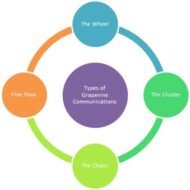
What is Grapevine? In every organization there exists an informal channel of communication called the grapevine in operation. It is called so because it stretches throughout the organization in all directions irrespective of the authority levels. Organizational Benefits that come along with Grapevine It is quite natural for a group of people working together to be interested in one another and talk about appointments, promotions, retrenchments or even domestic affairs. Some people derive extraordinary pleasure from gathering such ‘secret’ information and transmitting it to others. They are the leaders who control the grapevine. Soon this info reaches everybody and becomes an ‘open secret.’ Grapevine is more a product of a situation than of a person. Certain situations like insecurity of service, uncertainty over promotions, special increments to a colleague, certain innovations in the organization that are likely to affect the job prospects of the employees, are sure to activate the leaders of the grapevine that instantly spreads all kinds ofrumors in the organization. Communication Network of an Organization: The channel’s network is in a horizontal fashion as the communication is only between the workers of the same level of hierarchy. Apprehensions experienced by workers on matters like promotions and retrenchments become an obsession with them. Talking about them may not alleviate their fears, but it certainly provides them emotional relief. The existence of the grapevine proves that the workers are interested in their associates. The very fact they talk among themselves helps to promote organizational solidarity and cohesion. The management should work up this kind of situation to their advantage. How? Well, all information cannot be transmitted to the employees through the official channels. If there is some useful information unsuitable for being transmitted through official channels, it can be done through grapevine. The speed with which information is transmitted through the grapevine is just remarkable. Spot the Key Persons: The management should try to spot out the key persons involved in this process and keep them well informed to block harmful rumors reaching the employees. Also the grapevine can be used as an “acid test “to check the pulse of the employees. If there is any false rumor the management should immediately use the official channels to contradict and to dispel the fears from the minds of the employees. Grapevine might be Harmful Too: One of the major drawbacks of the grapevine is that it may spread baseless or distorted news which may sometimes prove harmful even to the employees. The information is sometimes incomplete leading to ambiguities. The swiftness with which the grapevine transmits information may even be damaging, before the management becomes aware of it and can take any rectifying steps. How to Handle the Rumor-Mongers? If the workers are associated with decision-making, the rumor-mongers will be automatically frustrated. If the workers are already aware, say, that the plant is to be modernized but the modernization process is not going to involve any retrenchments, the arrival of new machinery and engineers will not cause any undue apprehensions among them. Thus the harmful effects of the grapevine can be successfully counteracted. Organisations should indulge themselves in sending positive signals to the employees to win their trust and...

Posted by Managementguru in Business Management, Entrepreneurship, Human Resource, Organisational behaviour, Principles of Management, Training & Development
on Mar 30th, 2014 | 0 comments
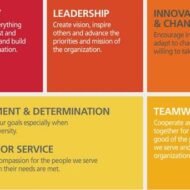
Values and Beliefs in Organizations What are Values and Beliefs in an Organization: An organisational value is “a belief that a specific mode of conduct is preferable to an opposite or contrary mode of conduct.” Infosys Narayanamoorthy on Value System : Our team was unique in our commitment to a strong value system. We believed in putting the interest of the company ahead of our own interest. We believed in legal and ethical business. A sound value system is what differentiates long-term players from others. Core Values of an Organization: Increasingly, organizations are setting out the core values that they think should govern the behavior of all their employees. Value statements may be produced which define core values in areas such as: Care for customers Concern for people Competitiveness Enterprising Excellence Flexibility Growth as a major objective Innovation Market/customer orientation Productivity Quality Teamwork But, is that all? By just defining what you think is important to guide the action of your employees may not suffice the cause. How do you put them into action! That’s where the secret lies. Imitating the Boss: How do you make people do what you want them to do! Just by being a precedence or role model for your followers, is that not true? The best example that can be cited is the school atmosphere, where the kids take to their teachers. They simply, blindly follow or imitate whatever their masters do. I think IMITATION is the right word, because it makes people easily inclined to the behavior that is appreciated by the organisation’s atmosphere. When you imitate your boss you get a surreal feeling of being a boss at least for that time being. Coercion is not the Right Approach: It is a general fact that it is very difficult to train or mould people the way we want to. And again it can be argued that people can be trained or molded very easily when you have the right kind of motivation and guidance. The core values should be INBUILT; it should be there RIGHT FROM THE START. If you have able managers to run your teams it becomes a cake walk for you to train the individuals without much COERCION. The authority and influence which the team leader has over the team says it all. Influencing the Employees the Right Way: Everybody in an organization plays their own role in cherishing the values imbibed and focus on achieving results, and keenness to “GET GOING AND KEEP GOING”. High work output is expected from a clerical staff, the Supervisor can be depended on for effective organization and control of teams and their work. THE MANAGER is clear about what “success “means for the business and is resourceful in overcoming obstacles. THE SENIOR MANAGER maintains focus on the “BOTTOM LINE” despite continuous changes to procedures and systems, and the EXECUTIVE is focused on results even when dealing with very diverse complex tasks and proactive in tackling mistakes. Performance of Value Oriented Organizations: Value Oriented Organisations perform definitely better than others and achieve their targets in a quick manner. Values give direction to the firm backed up by solid principles to guide the action of the employees and also the commitment and determination to achieve whatever is due. Reliance Industries Limited stands as a testimony for a single man’s dream and vision and his core value was CUSTOMER SATISFACTION. To scale to greater heights, you also need STRONG WILLED PEOPLE RIGHT ATTITUDE ACTION PLANS STRATEGIES PERSISTENCE DETERMINATION and PASSION Values add integrity and honor to your organization and you should always remember that to hold your values you...

Posted by Managementguru in Business Management, Human Resource, Organisational behaviour, Principles of Management, Training & Development
on Mar 30th, 2014 | 0 comments
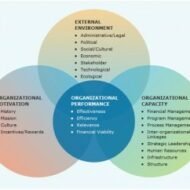
Organizational Assessment – Motive and Means Organizational assessment involves creating a picture of “what it is”. The snapshot should provide a clear view of the present position of the company and it should indicate whether there is a need to go for a change process. The data provides a baseline which can be used as a reference point to measure change in the future. Employee opinion surveys and climate surveys form a critical part of this measurement process. The key to an effective assessment is being clear about the goal of the process and being specific about the questions the intended exercise must answer. Cultural assessment: This provides information about core dimensions of organizational culture which includes satisfaction with the work itself, satisfaction with pay and benefits, opportunities for advancement, satisfaction with leadership and supervision, motivation, common values and performance commitment. If the leader proves to be aggressive, committed, value driven, so will be the employees who obviously take after their leader to fulfill his vision. The purpose behind analyzing the culture of an organization is to determine its efficiency level and to generate recommendations for continuous improvement. This exercise should not be a one-time affair as periodical inputs and feedback are excellent ways to align culture with the vision. In this way, management is better able to anticipate and prevent any potential problem, and to assess employee attitudes regularly. Survey administration: Surveys are administered to large groups of employees at one time and it is emphasized to be anonymous to erase any apprehensions in their minds. Open-ended questions allow employees to express their opinions about areas that need improvement and also the problem areas or bottlenecks that hinder their development. Report generation: The statistics collected is summarized and presented for each and every dimension covered in the survey. The report compares the organization’s current culture with previous administrations of the survey. Such open ended discussions bring out the problem areas which the management had not been previously aware of. Feedback to management and employees: The managers discuss the outcome of the survey in order to gain a better understanding of the various issues facing the organization, and decide on a plan to give feedback to their employees. This is a kind of human resource strategy which helps the management to bridge the gap between various levels of the organization and its members. Recommendations to the management: A final report submission by managers of the respective departments along with their recommendations for management’s perusal is the final step in organizational diagnosis and with the approval of “the big boss” action plans are executed that aid in improving the organizational effectiveness. The notion of this entire exercise is to provide insight into the current skill levels of the work force and to design an effective plan for performance improvement based on the assessment of total development needs....

Posted by Managementguru in Business Management, Change management, Human Resource, Organisational behaviour, Principles of Management, Project Management
on Mar 30th, 2014 | 0 comments
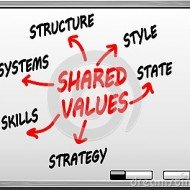
Effective people are preferred to rather than efficient people as the former does the right thing and the latter does things right. Redesigning your workplace not only refers to the infrastructure but also the internal factors that might affect the productivity of your firm. Big corporate firms generally face challenges in the form of Lack of co-operation between subunitsIncreasing complaints from the customersRising Operating costsDip in the moraleMajor changes in technology All these signs are indications of a not so enterprising organizational climate. And it calls for quick decision making regarding introducing some changes that bring some positive development in terms of improved efficiency and increase in productivity. Redesigning Workplace in Response to Exogenous Factors Growth of Organizations The challenges mentioned above may make an organization’s existing structure, management practice or its culture obsolete for the new situation. Growth of an organization should be a result of collaborative effort of all the units of an organization and it is objective and not subjective. An organization is comprised of different elements which interact in deciding the organizational effectiveness. The task or goal, technology, structure, people and the internal and external environment of the firm; all these coexist and hold the firm together. Be it a school, a hospital, a union, a club or a business enterprise the interactive nature of these elements make the process of managing very difficult. Medical tourism and business travel are becoming more popular in Asian countries as it increases the scope of collaboration of industries that can coexist to enjoy a win-win situation. Who is an Effective Manager ? An effective manager anticipates these challenges and proactively initializes a planned change. He strategically prepares the organization to be subject to planned change by manipulating the structure, technology and behavior. Understanding the dimensions of change helps him to manage change better as people are always resistant to change. Modern enterprises right from the start have to install and implement “systems” that are technologically most modern and hire suitable people who are techno-savvy; Because technology rules the world and the development of new software programmes and hardware components feed on themselves every day. Developing an Organization as a Whole Behavior of people is unpredictable but controllable. Individually oriented training and development programmes does not prove much to the benefit of the organization as it creates apprehensions in the minds of the individual that are related to the culture and attitude of his superior and subordinates. The idea of developing the organization as a whole through team building is a better perspective as it renews the enthusiasm of people working for you and as a team they feel more cohesive and adhered. Synergy plays its role in improving the interpersonal relationship amongst the team members. Firms are becoming more modern in their outlook. For instance, a showroom whose purpose is to showcase your products also provides entertainment by its aesthetic value. Only if the customer is impressed by the artistic way of your exhibit, will he enter your showroom. Change is inevitable and it improves the health of an organization. The focus should be on “total system change” and the orientation is towards achieving desired results as a consequence of planned activities. Flat Organizational Structure You would have come across the latest buzz word “flat organizational structure”. This is designed in order to bridge the gap between front line employees and the executive level. If there is only few levels of management, the process of communication is more effective, the art of delegation becomes mandatory and need for participation in the decision making process involves all the employees which in turn reduces bureaucracy. There is no set pattern...

Posted by Managementguru in Business Management, Human Resource, Organisational behaviour, Principles of Management, Training & Development
on Mar 22nd, 2014 | 0 comments
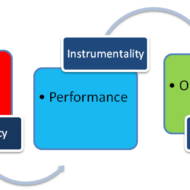
How to create an effective and Sustainable Model for Training and Development? The term “change” is synonymous with competitiveness in modern world and thus corporate firms are in a position to evolve unique, sustainable and strategic training model for employees that will facilitate the following: On one hand the training process motivates the suitable employees to perform well and makes them perceive their role properly in order to accomplish the enterprise objectives. On the other hand the organisation keeps itself abreast by constantly updating and understanding the training needs through Assessment of the external environment and Expectations of the employees in terms of rewards whether intrinsic or extrinsic. Porter and Lawler Model: The Expectancy Motivation Model of Porter and Lawler serves as an inspiration for effective training. The stress is on The value placed on performance outcome by the individual. The degree to which the individual believes that his efforts will lead to attainment of these rewards. Psychological aspect of this model: Almost all individuals are motivated by money ( by the way, Who doesn’t want money!). But money alone does not serve the purpose of motivation. Job satisfaction is a relative term in that different people find different things or elements motivating them in their work environment leading to job satisfaction. It might be Challenge Good inter personal relationship Pay Perks Culture Excellent leader Pressure Stress and the like… Assessment of training need: The training needs must be assessed by the respective organisations considering the following aspects: To transform the individual from the capacity of learner to executor Instil in him confidence to do the job well Relate his job to rewards so that he will try to excel Give your employees scope for career advancement Incorporate technical and technological innovations as part of your training process Physical, emotional and social elements in the internal as well as the external environment must be taken into consideration while training the workforce. Physical– relates to the physical fitness needed to perform the technical skills Psychological– relates to keeping the morale of the employees high at all points and maintaining an amiable work atmosphere Social– relates to the friendly relationship that should exist between the trainer and the trainees and among the trainees. Usefulness of the model: This model lends its support to the training and development process through three steps or stages. Diagnosis stage- Need analysis Formulation stage- Programme planning Evaluation Diagnosis stage: The interplay of ability and role perception Training brings out EFFICIENT as well as DEFICIENT performers. That is one good thing and also making the employee understand the role he is about to play as part of the organisation. Training through learning is one aspect which imparts knowledge and training is considered to be effective if one’s behaviour is modified as per the expectations and demands of the job. Role perception can be misunderstood by some individuals when they might try to exercise undue authority or overlook their duties and responsibilities. Confinement of authority Superior-Subordinate appraisal procedures Clear HR policy formulations are needed to avoid confusion and chaos in role playing. Formulation stage: The effected change through learning is expected to be retained by the employees throughout the career span in the organisation followed by constant grooming. The stress is on the value of the activity to be learnt Giving feedback on the progress of employees towards final training objectives Relate the learning activity to increasing, meaningful materials already studied outside the training programme. Evaluation stage: Training evaluation is particularly necessary when the organisation wants to encourage the competitive spirit amongst the trainers and evaluation is considered as a challenge by itself. If the training provided eliminates obstacles...










